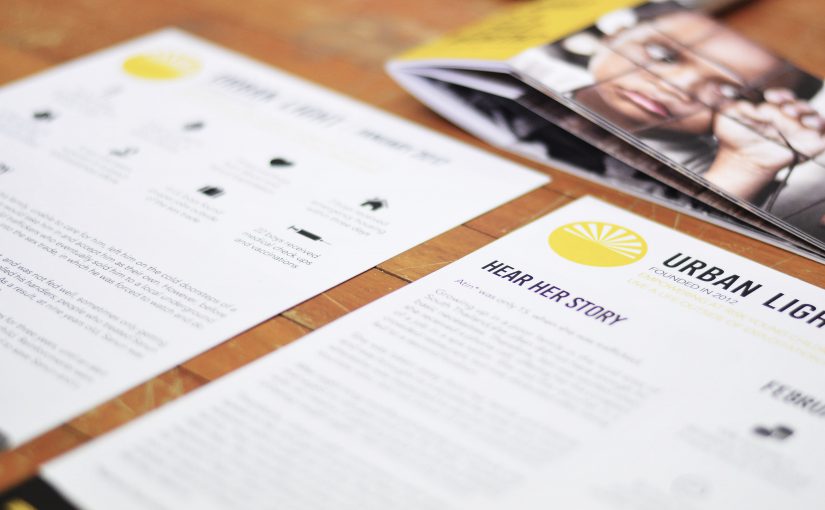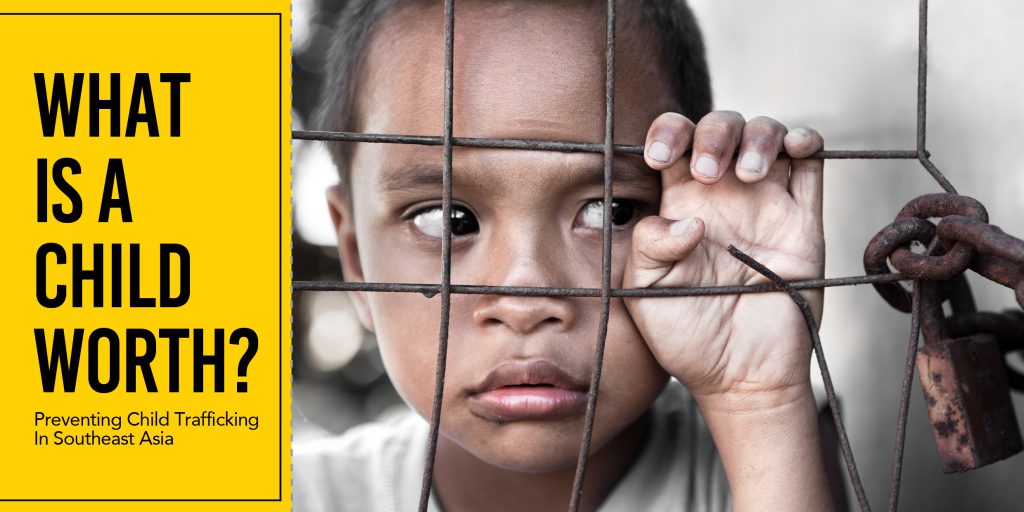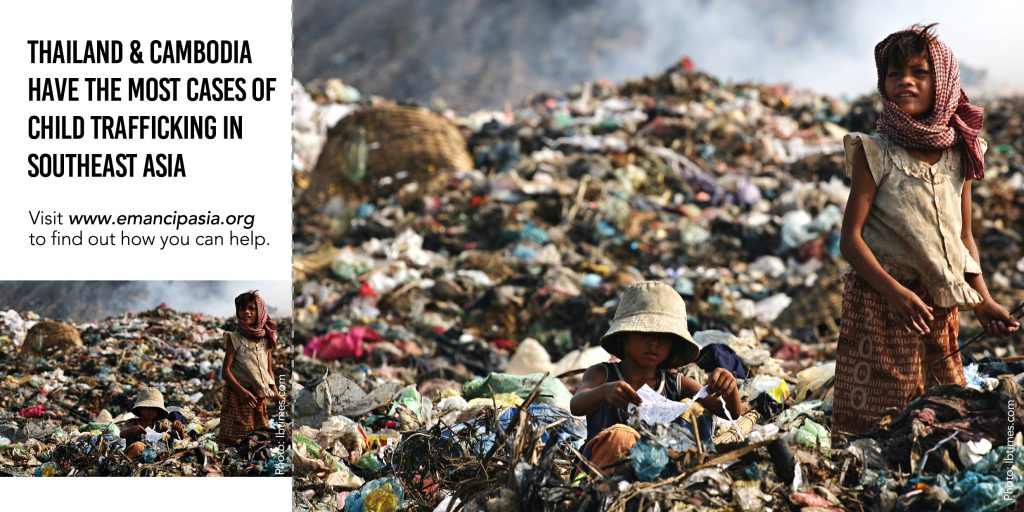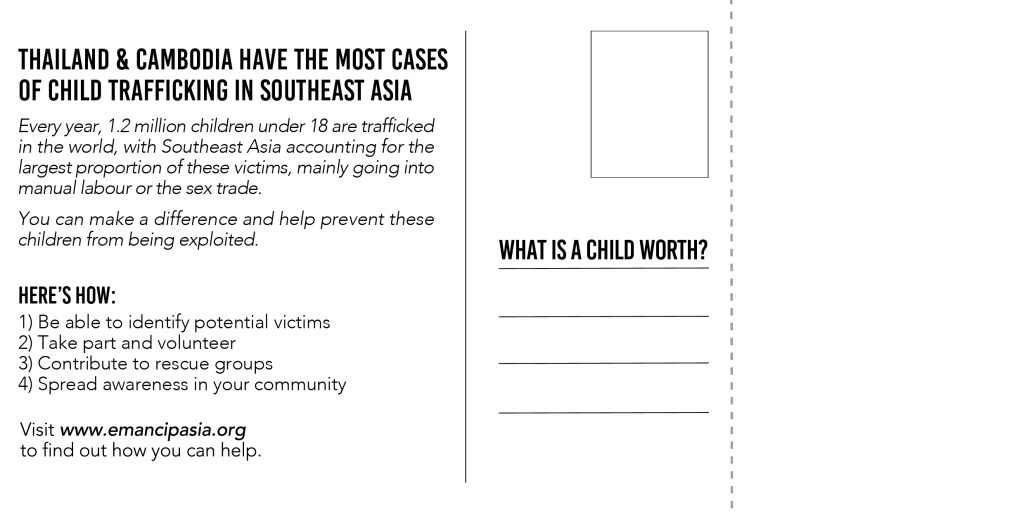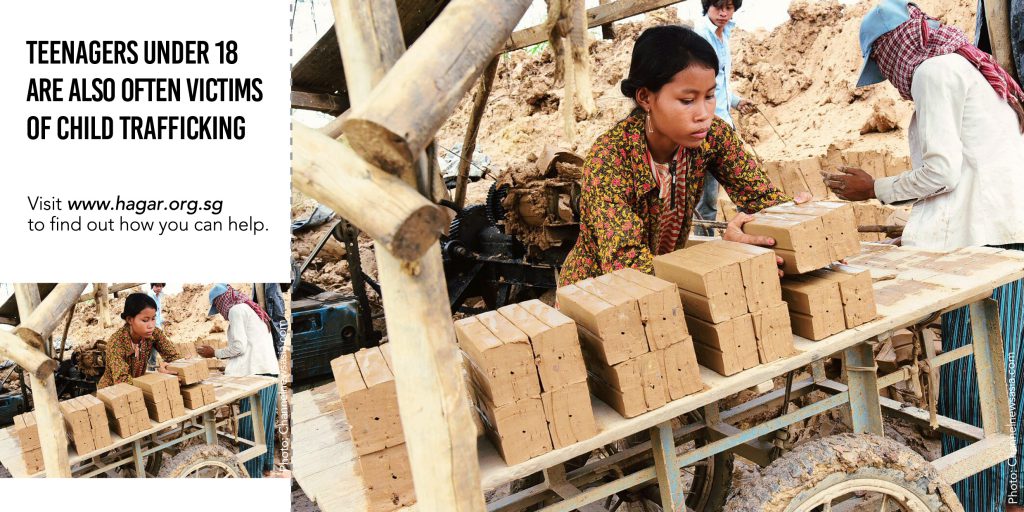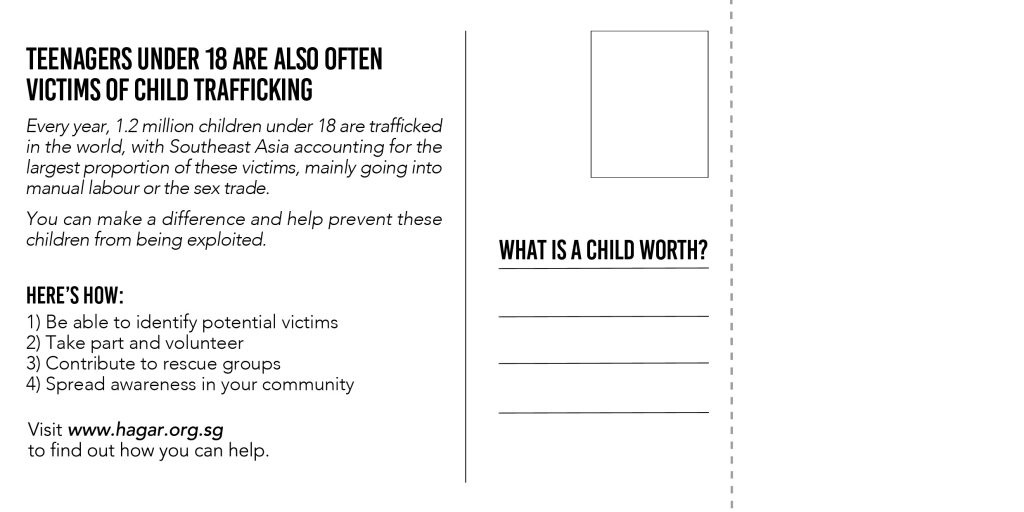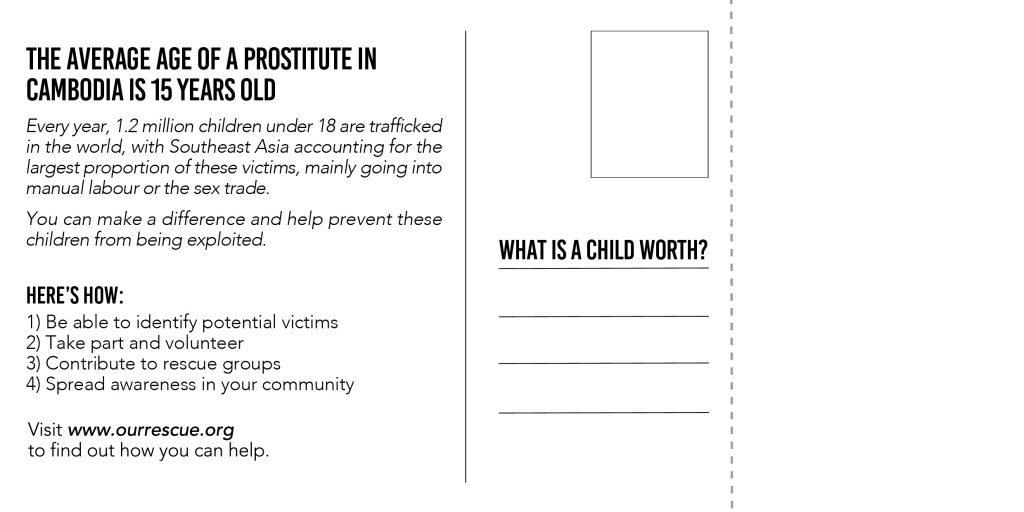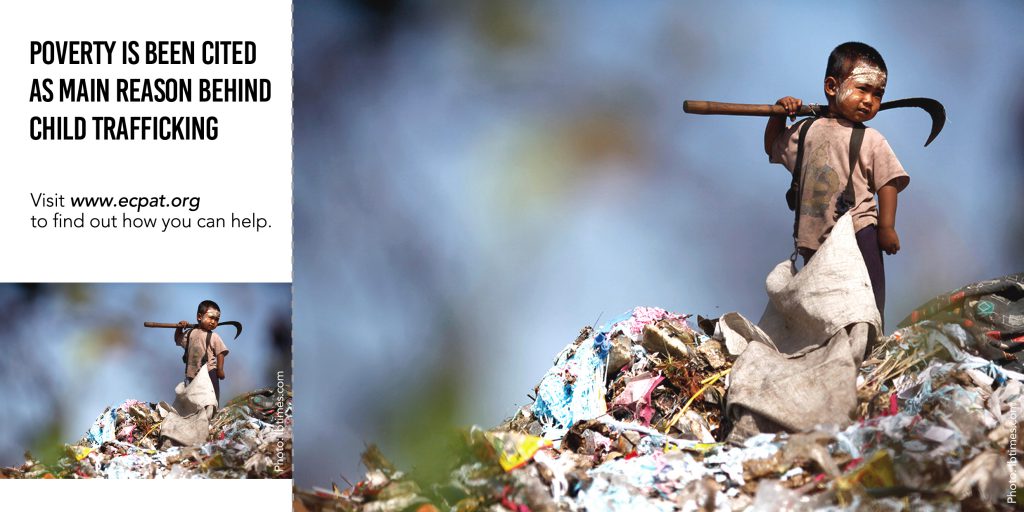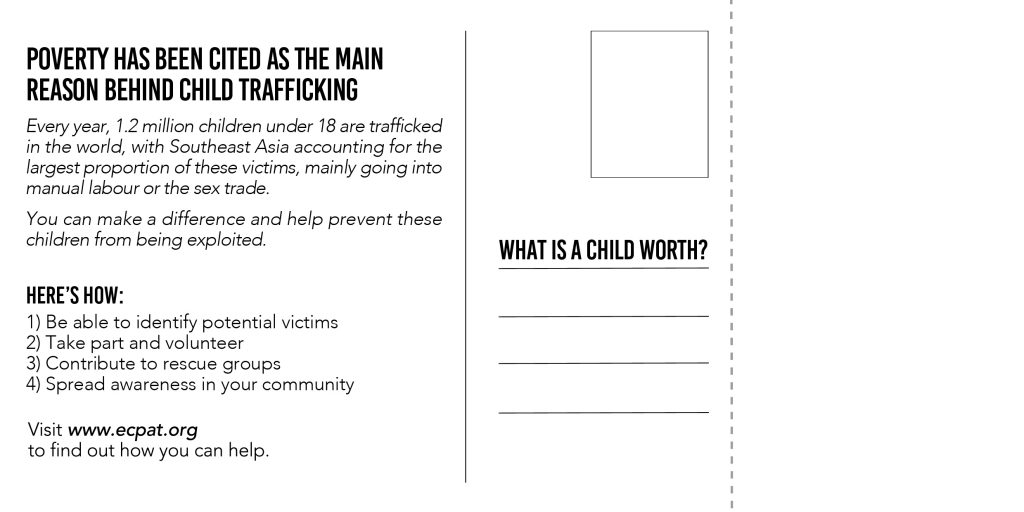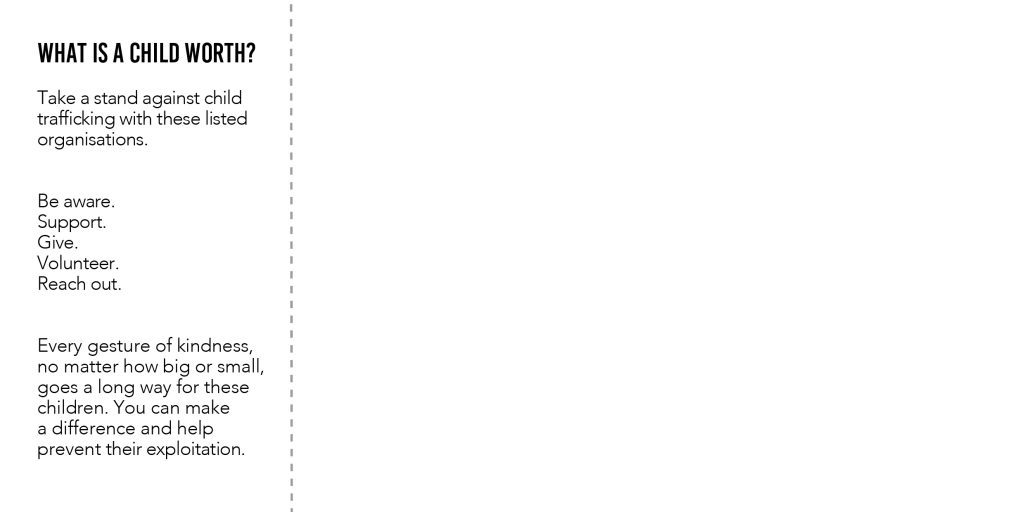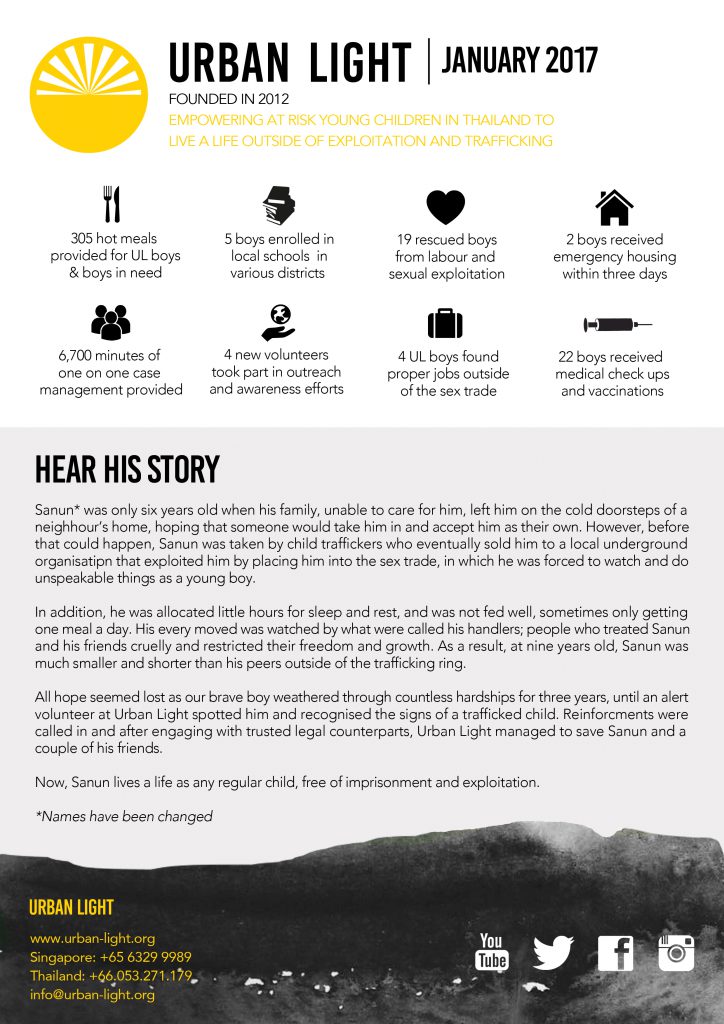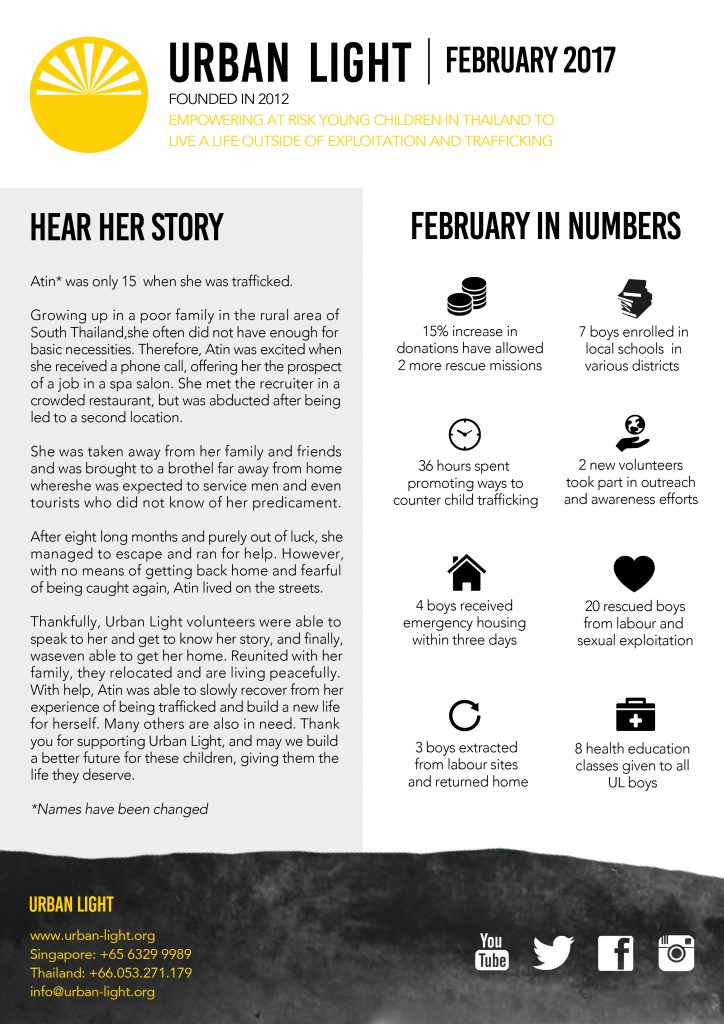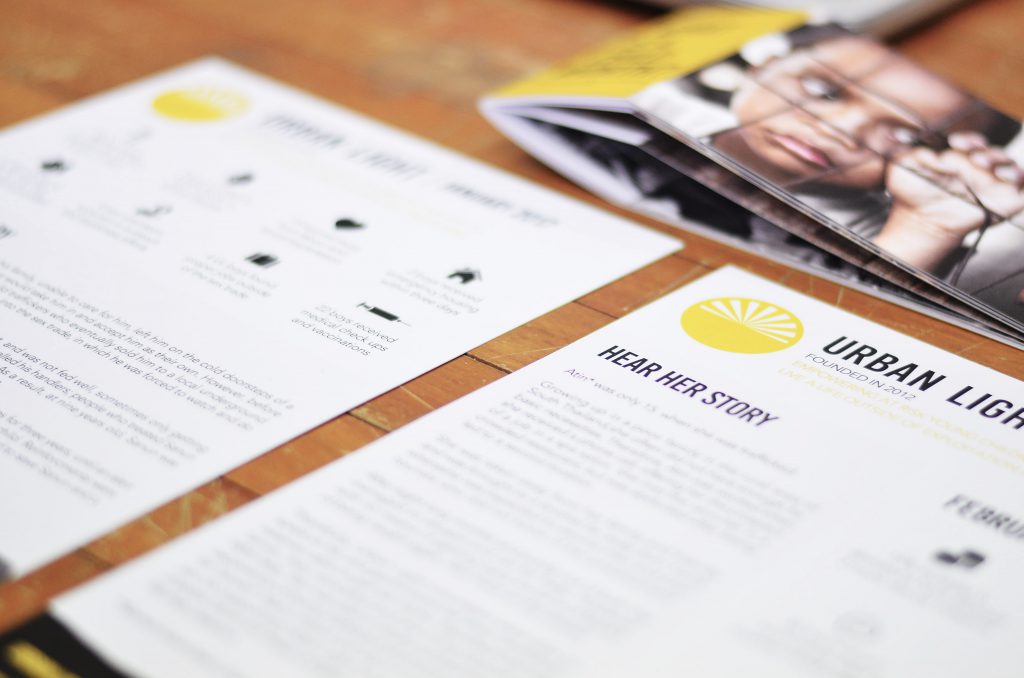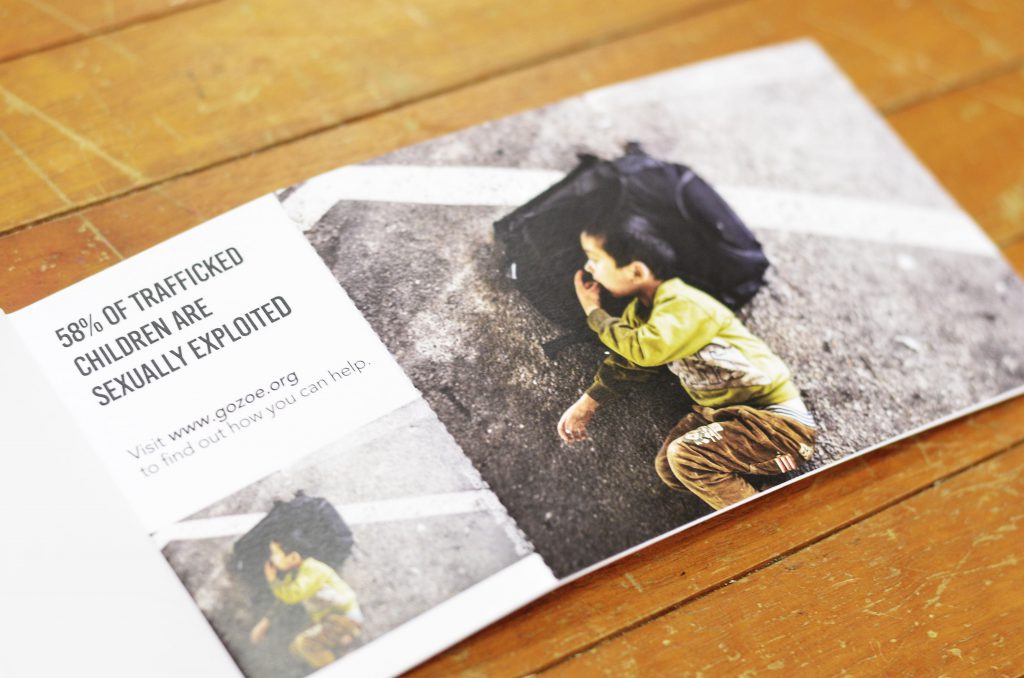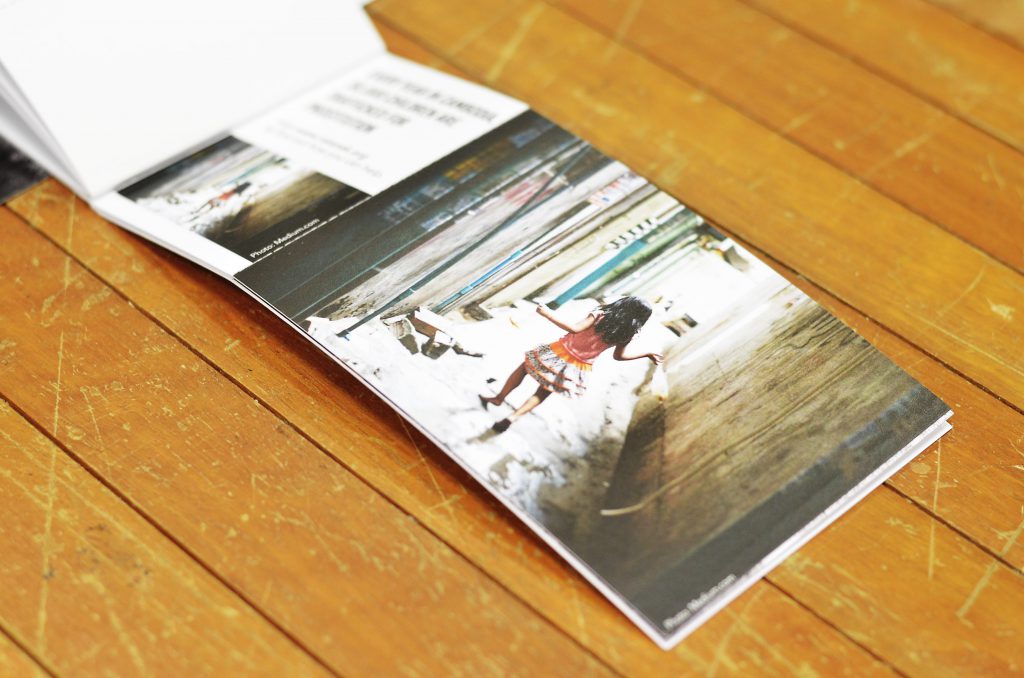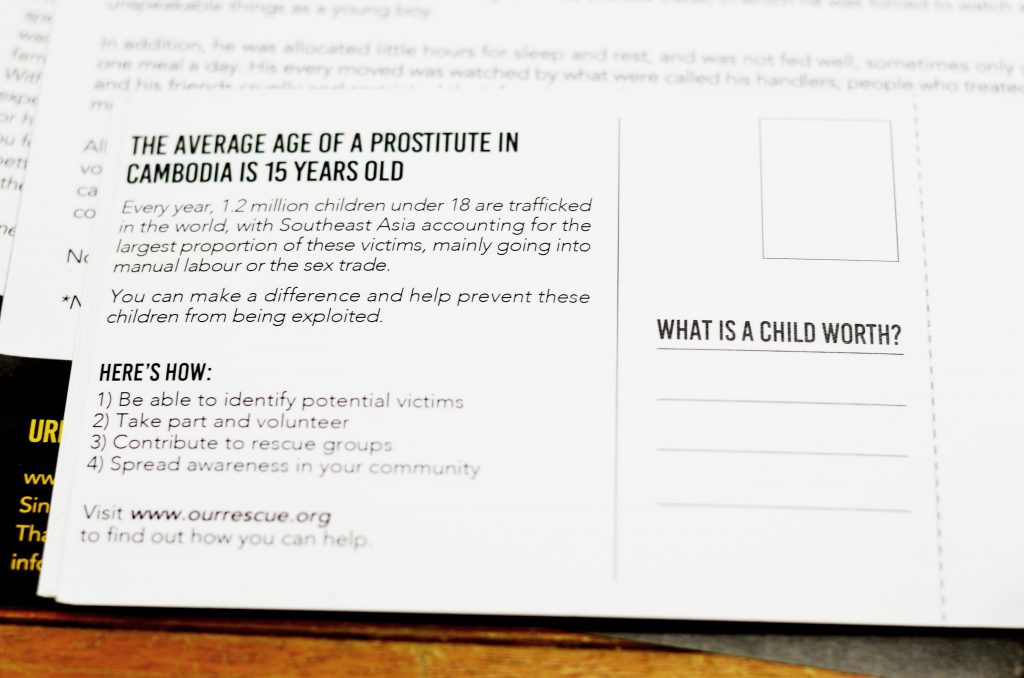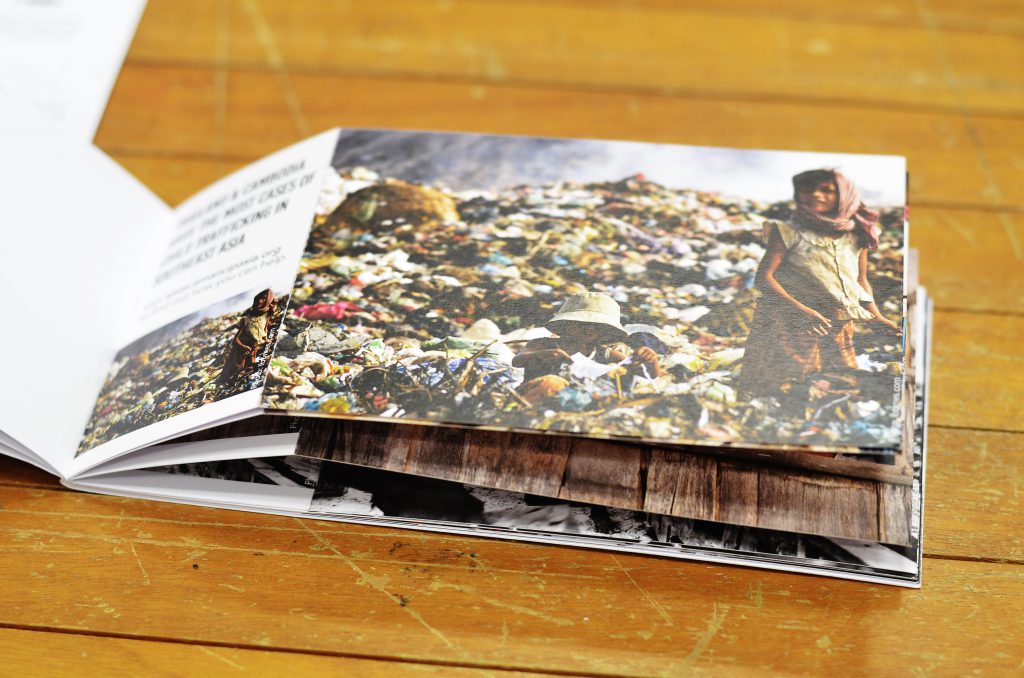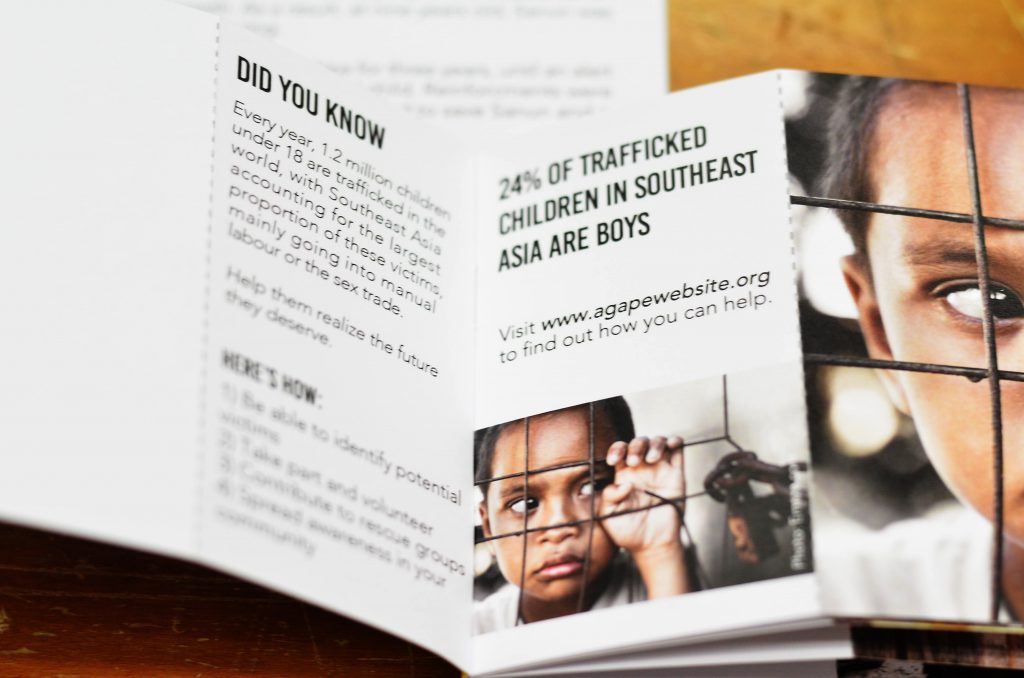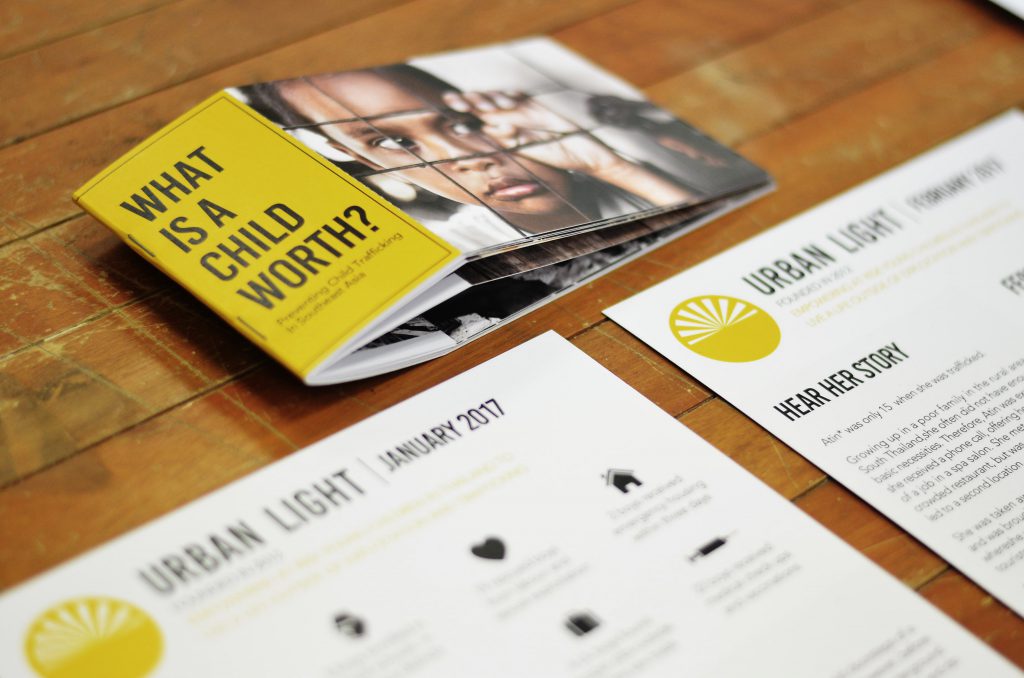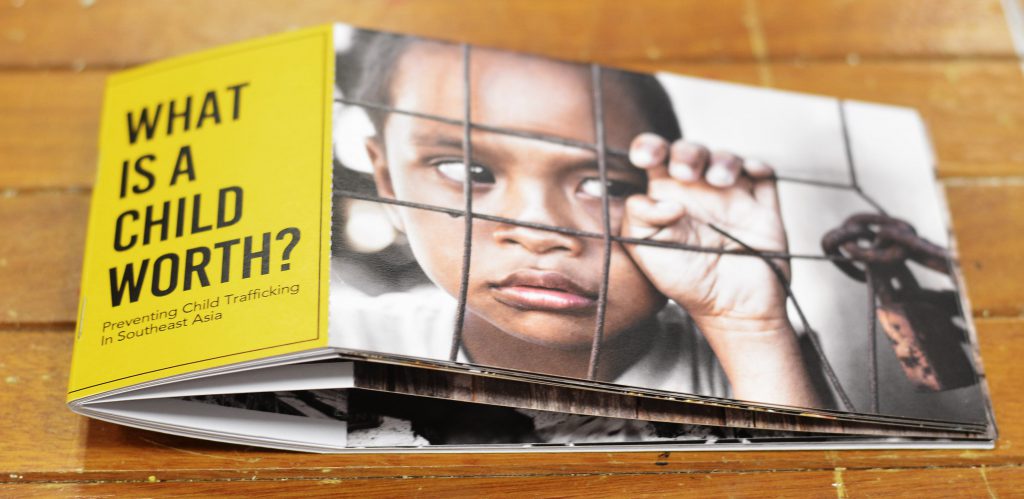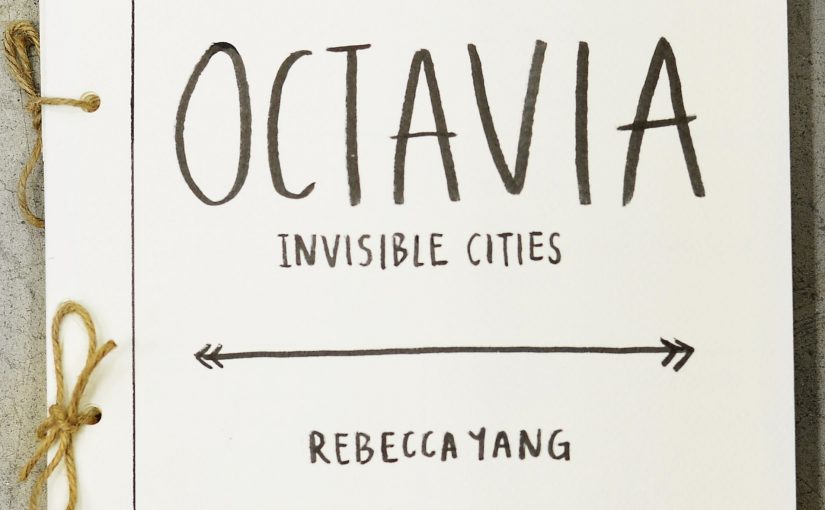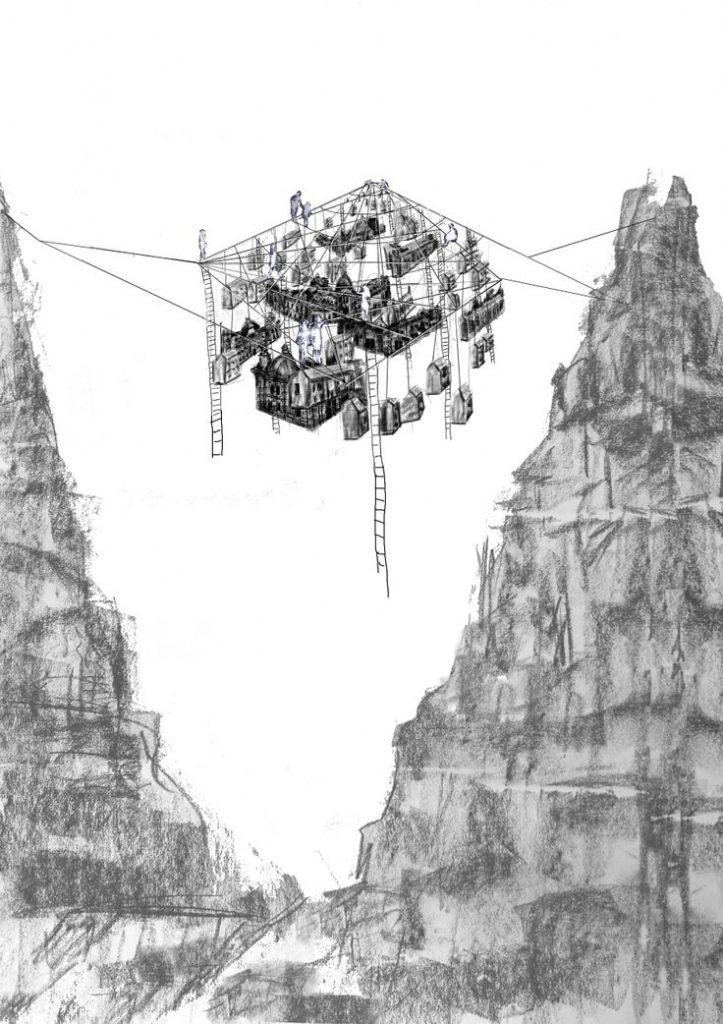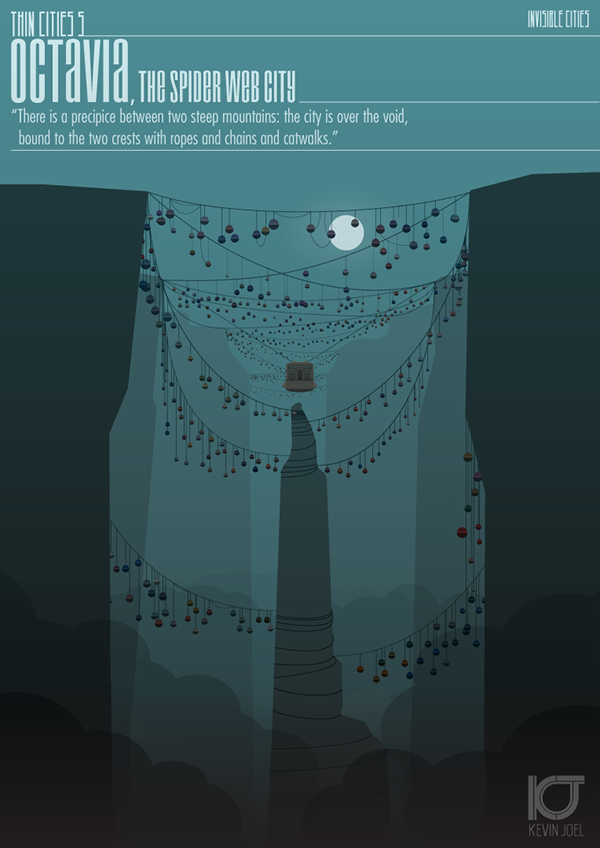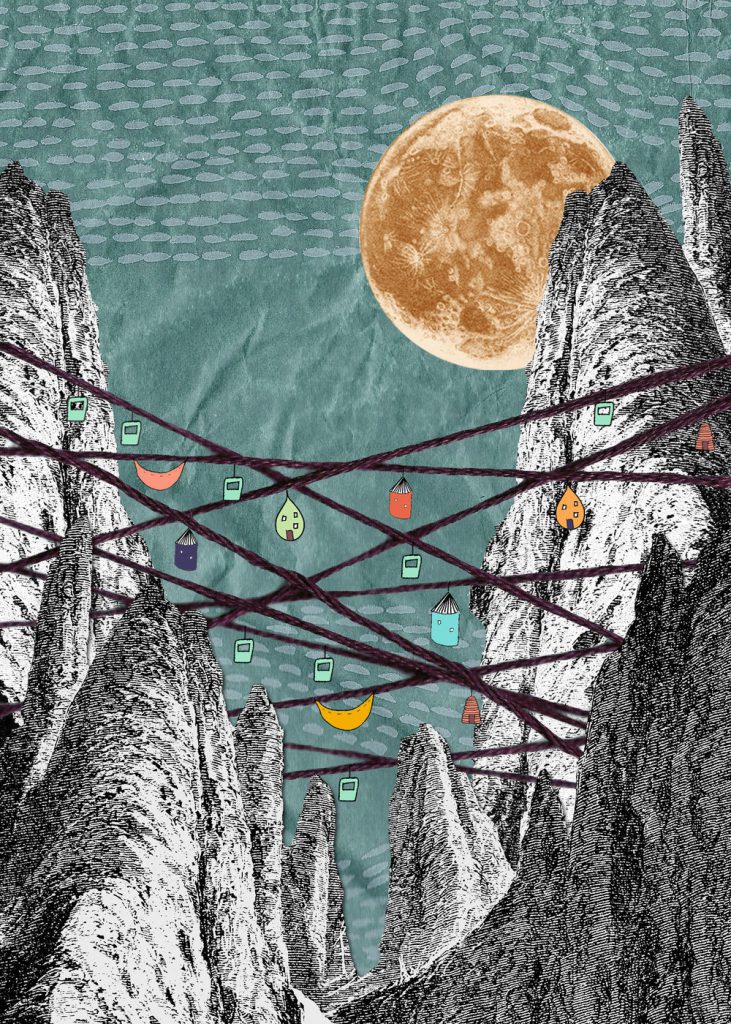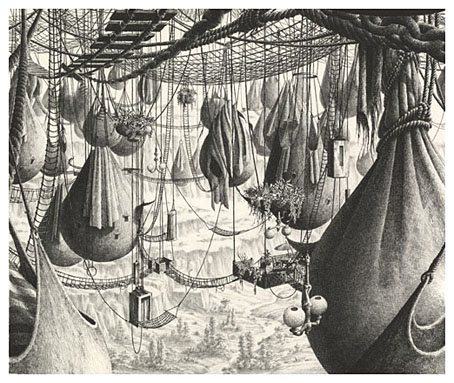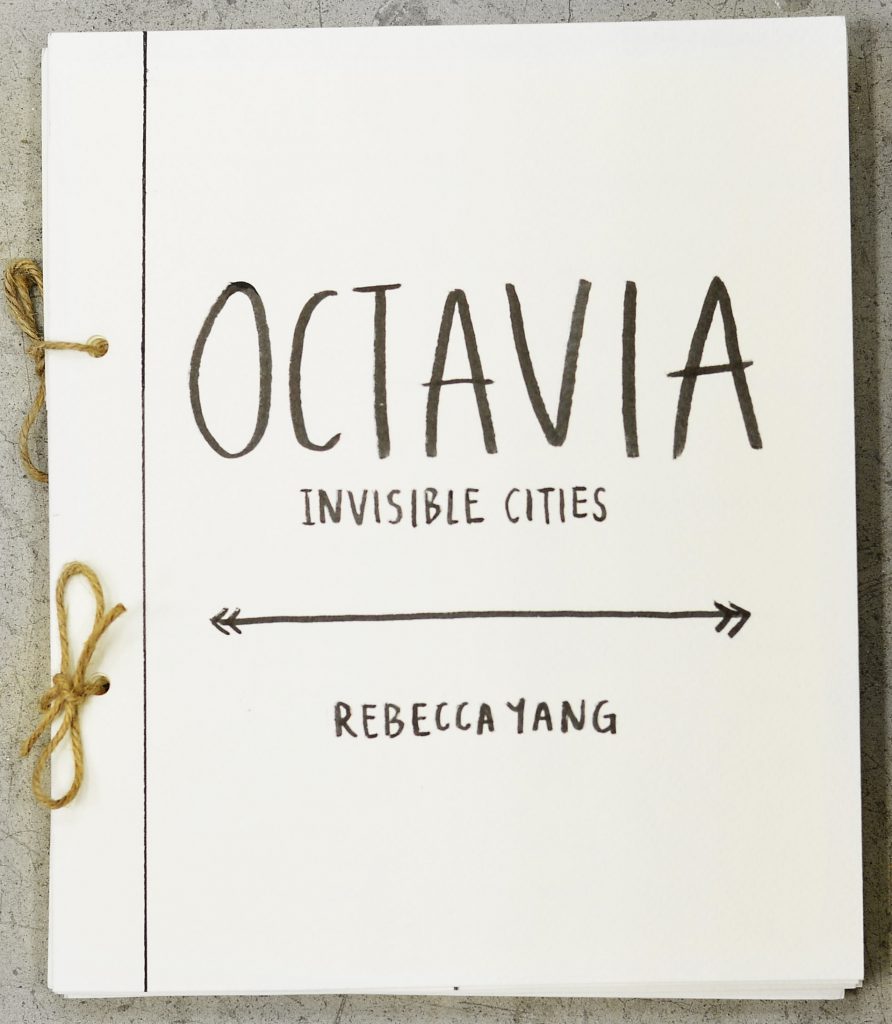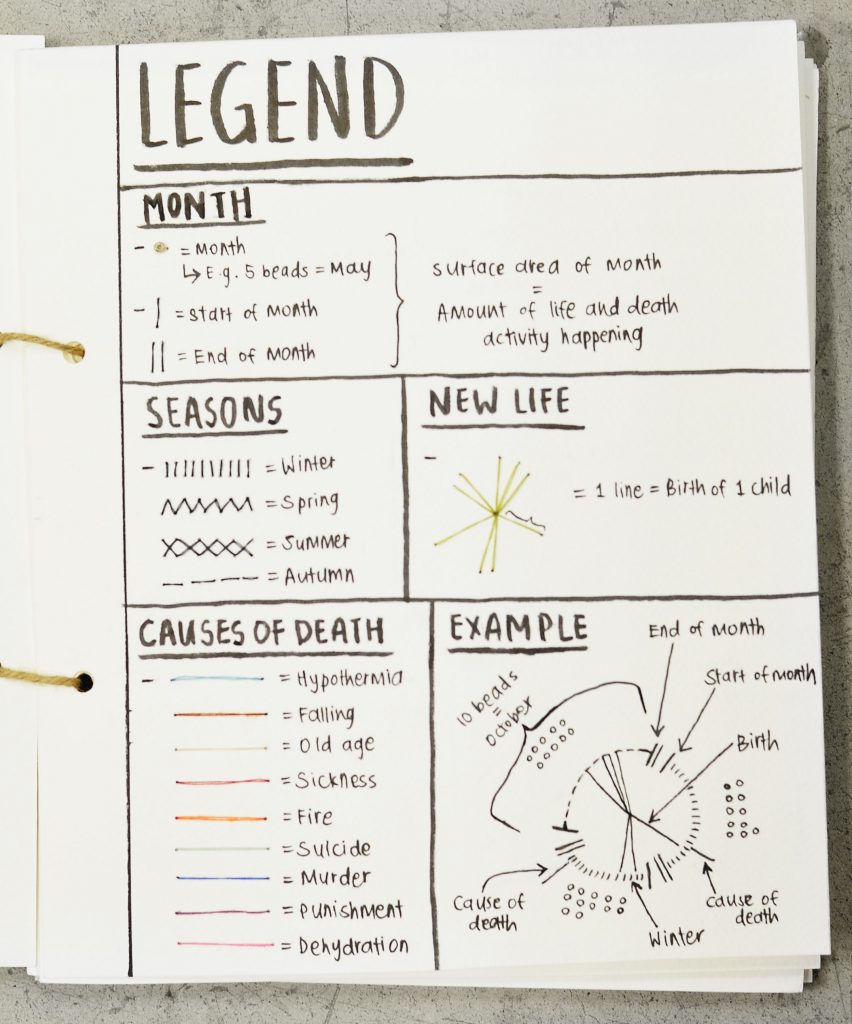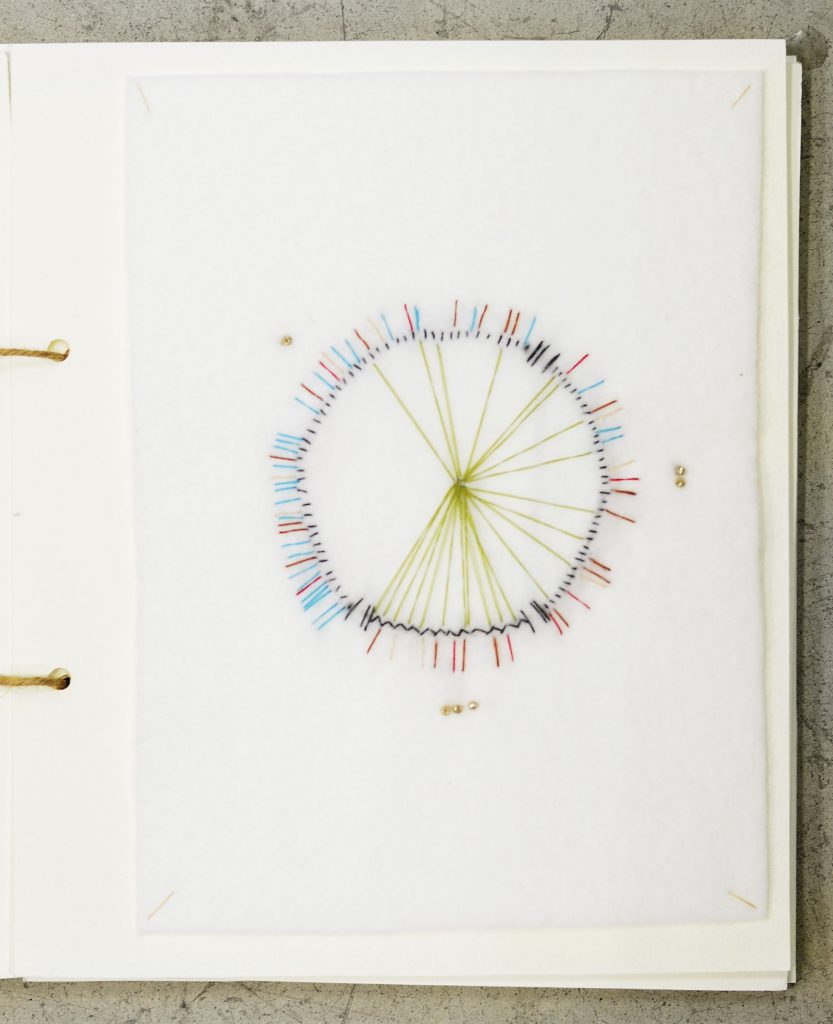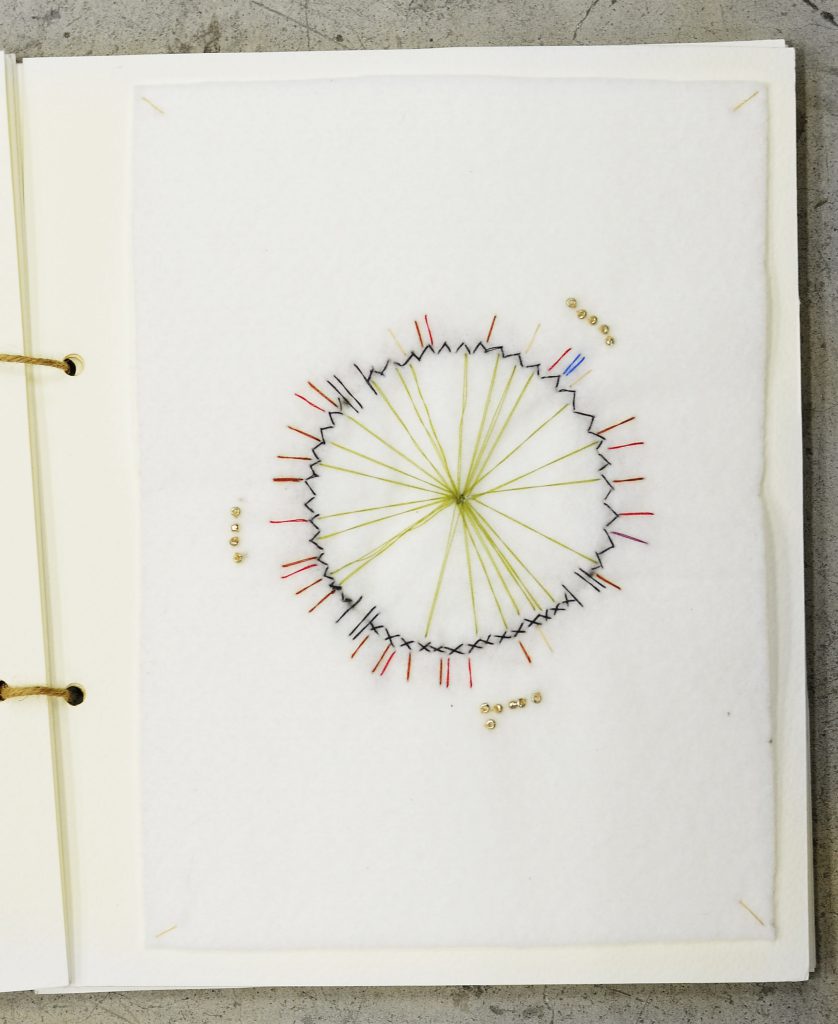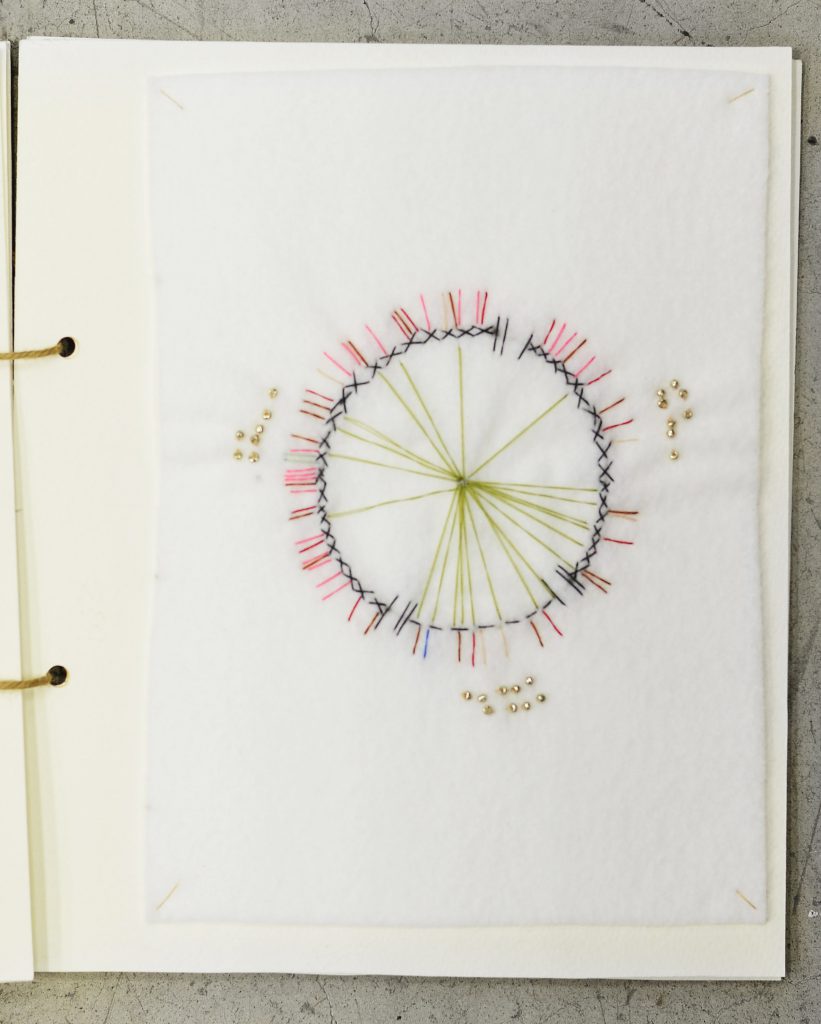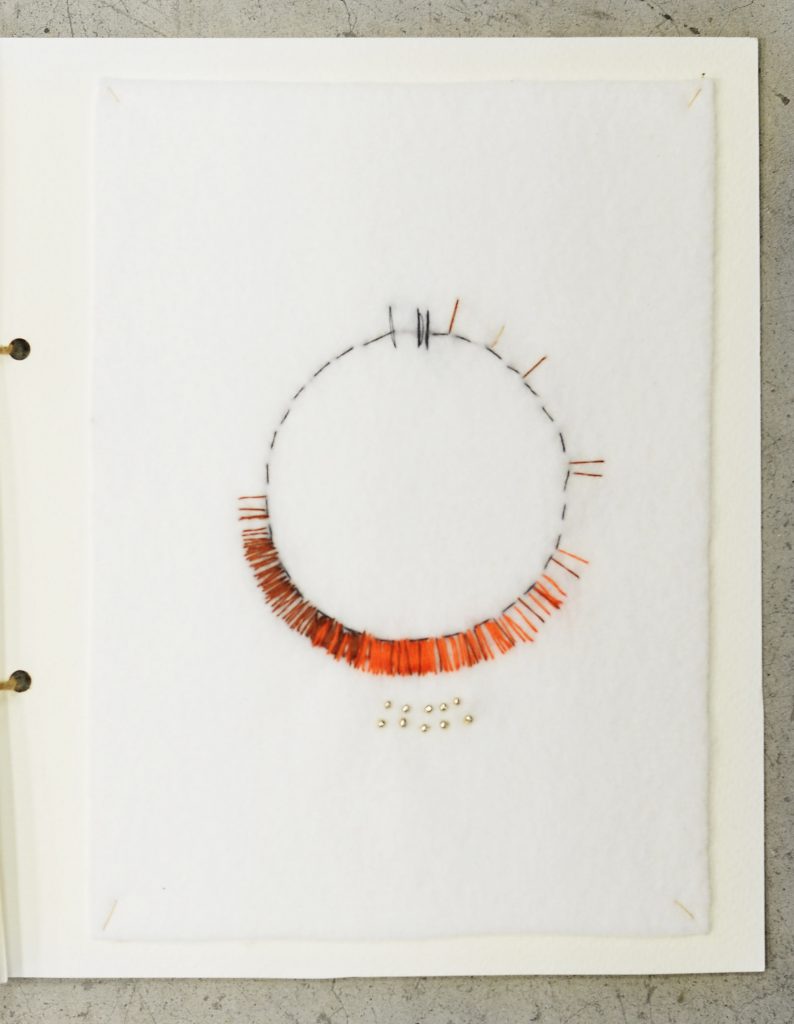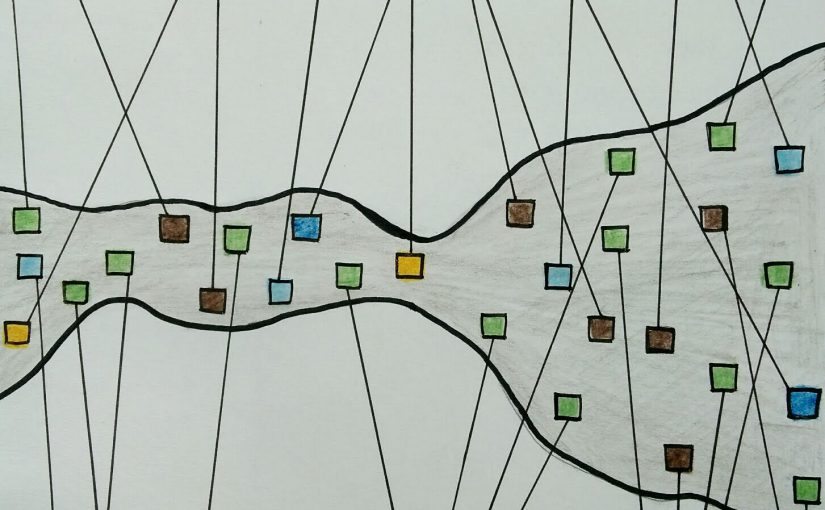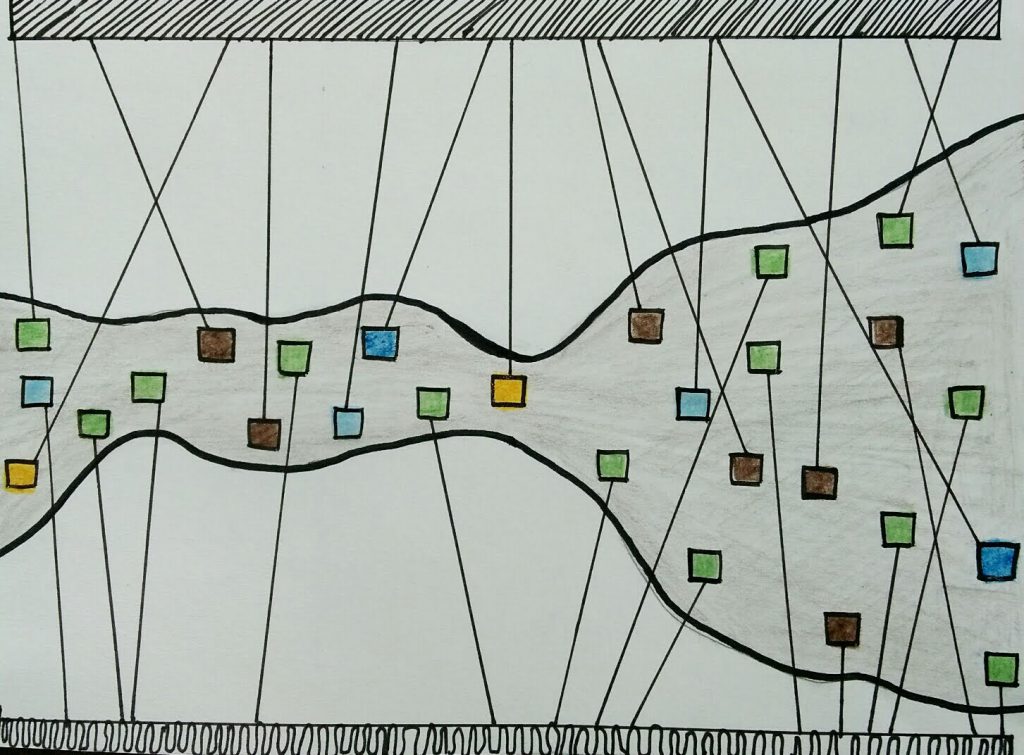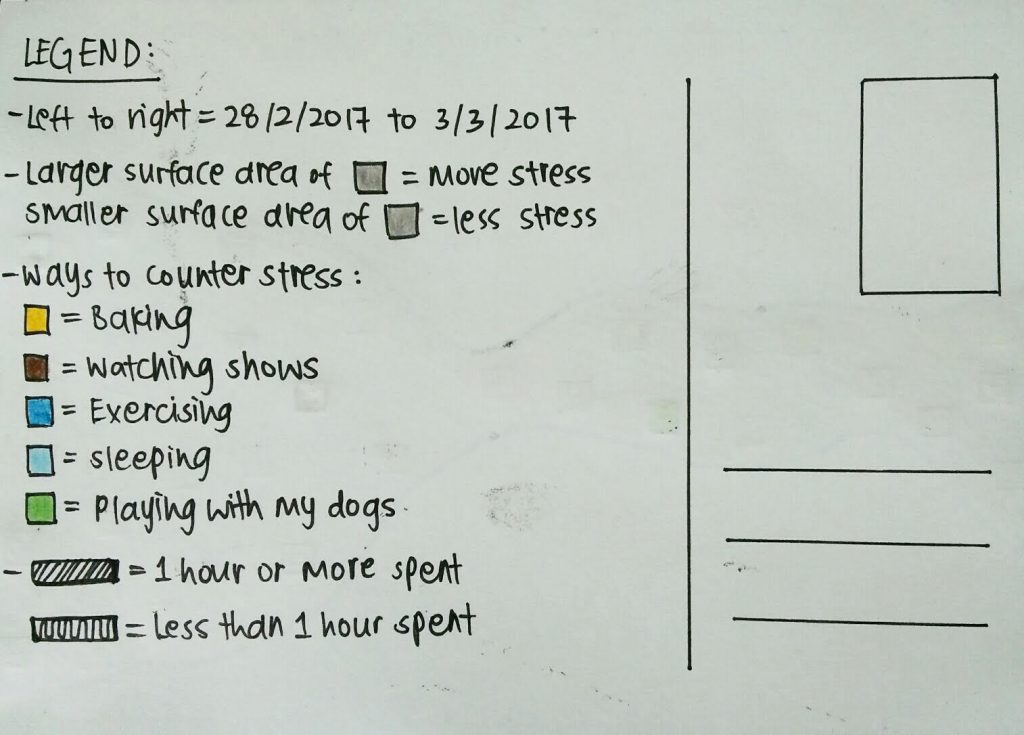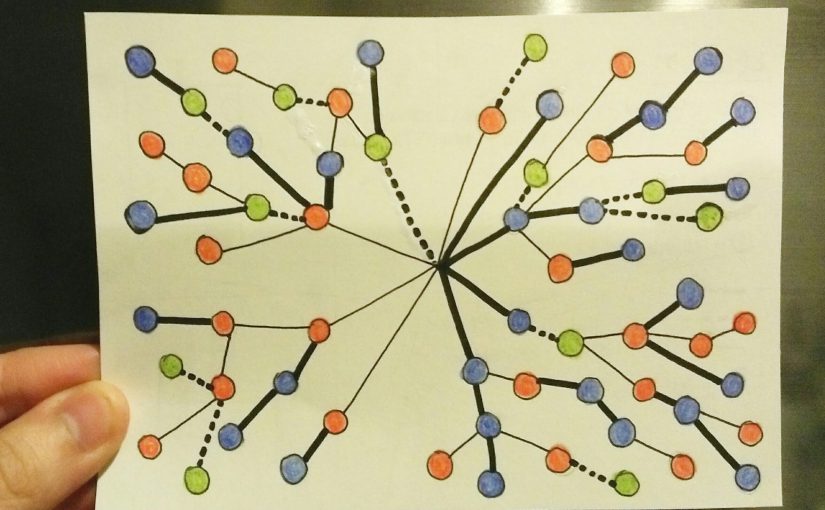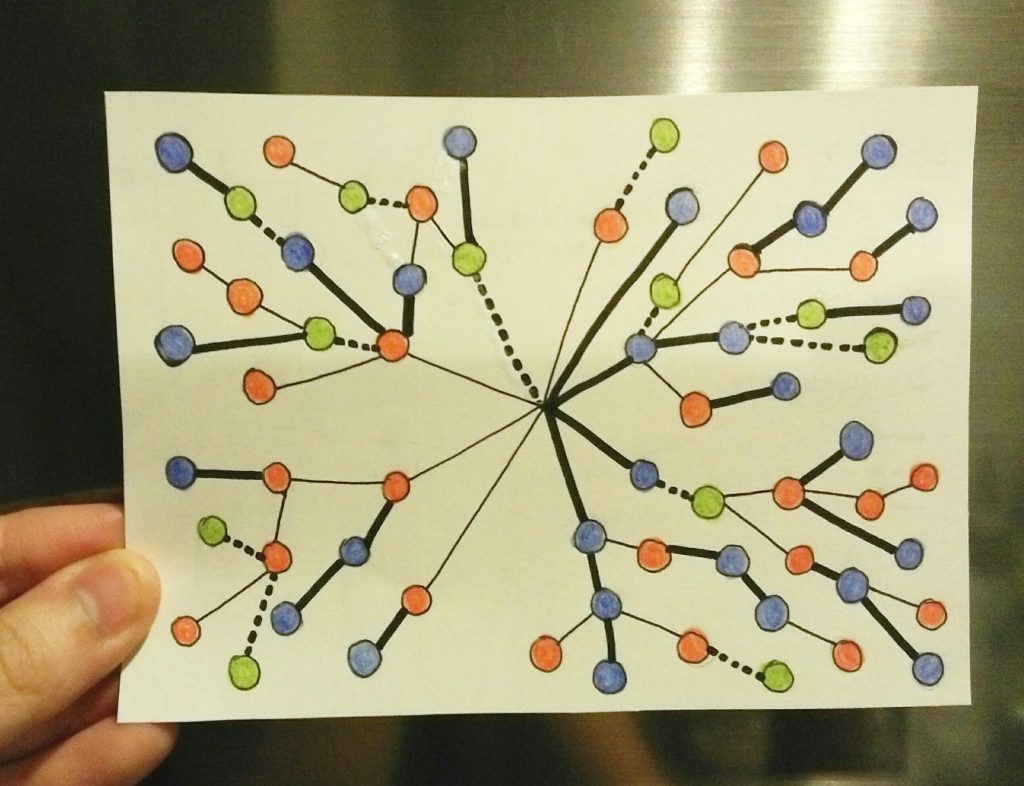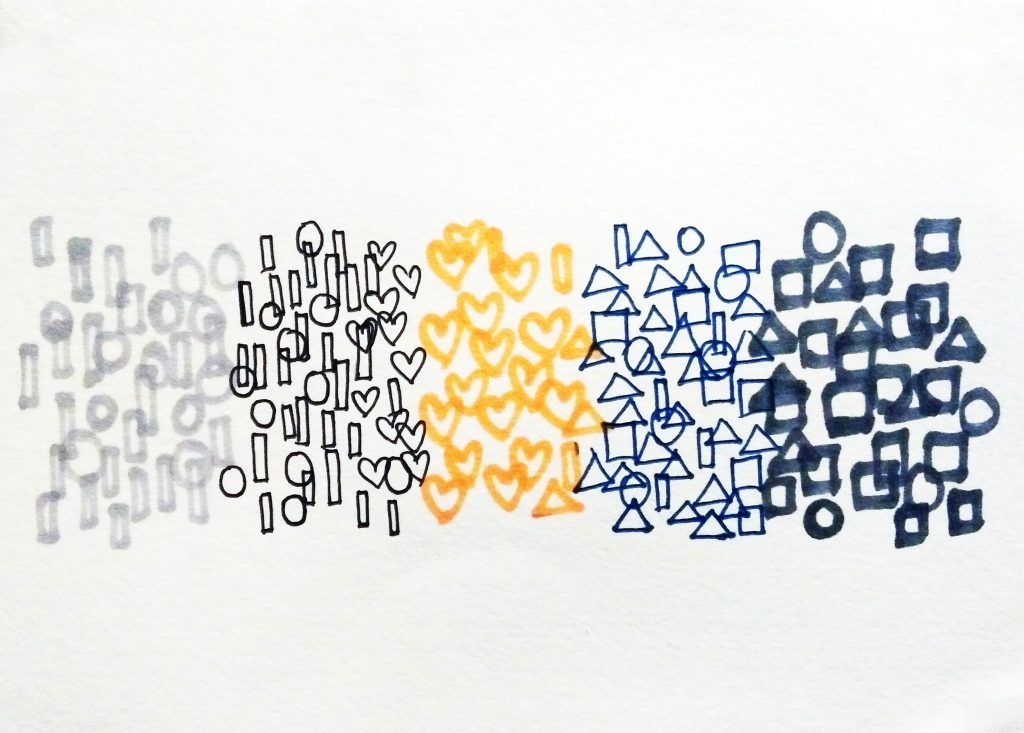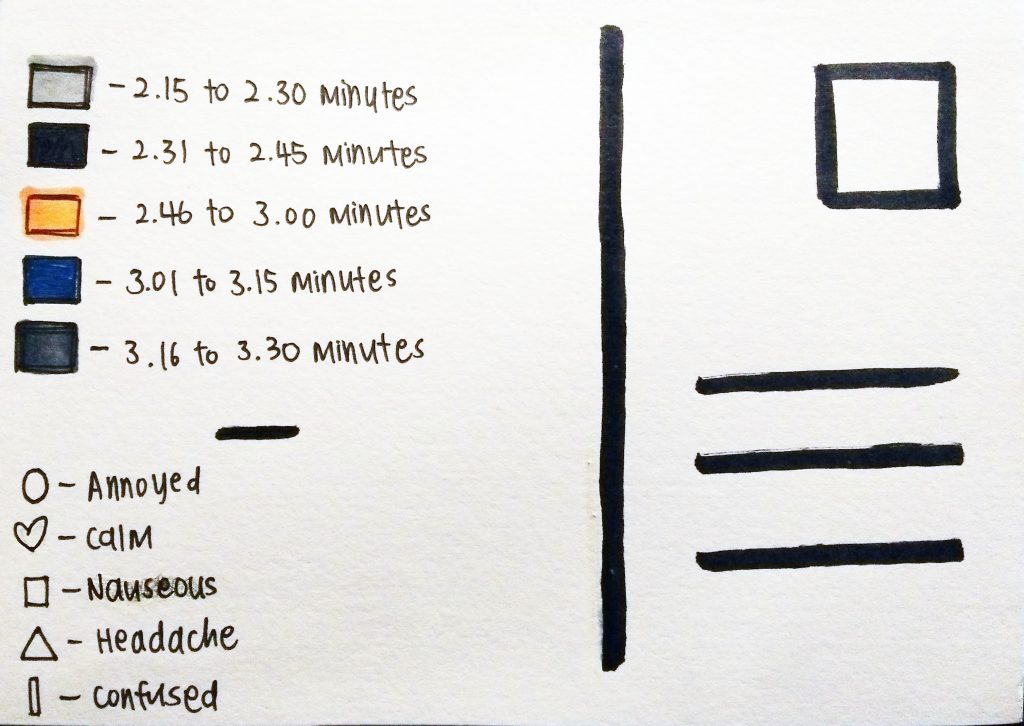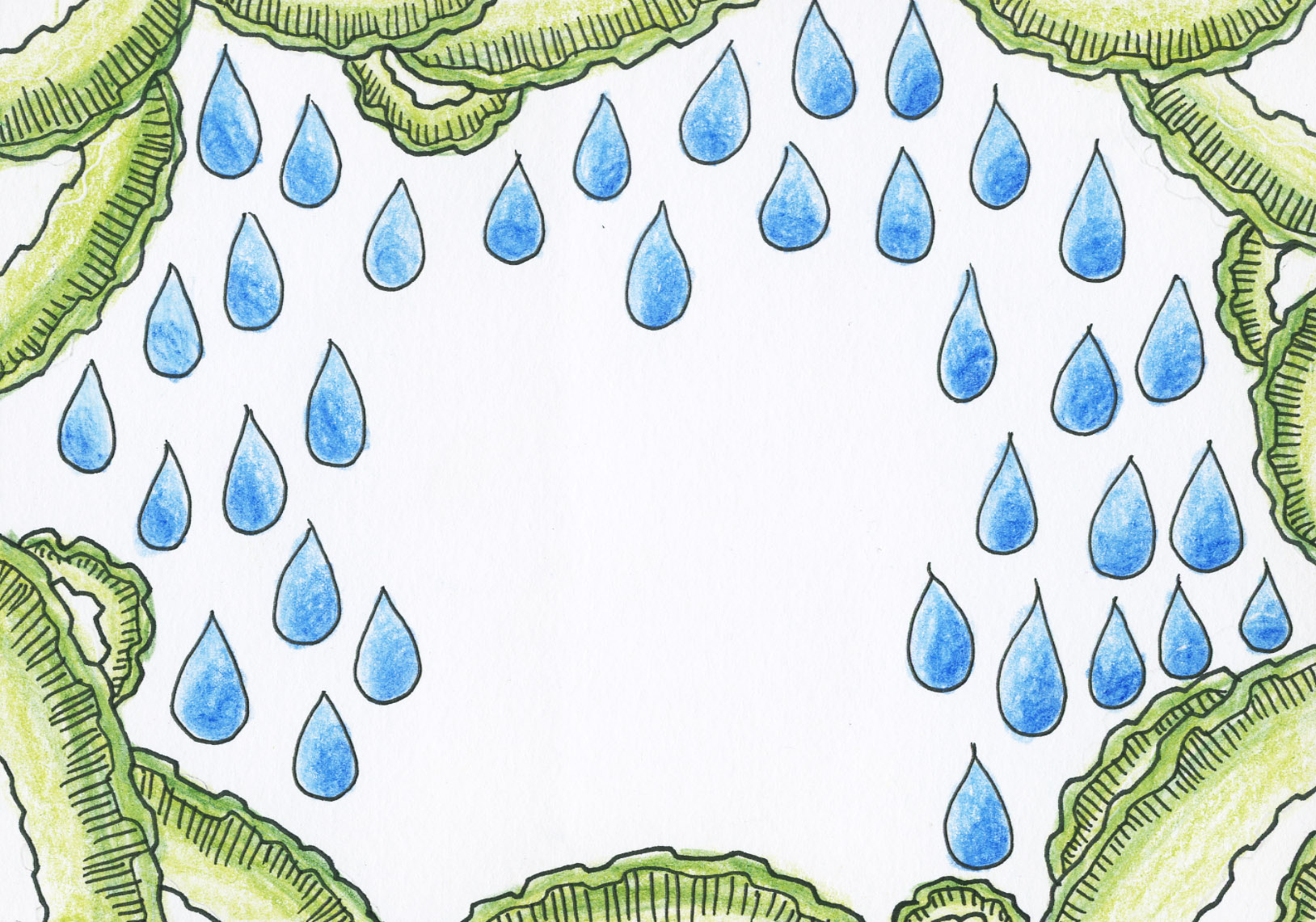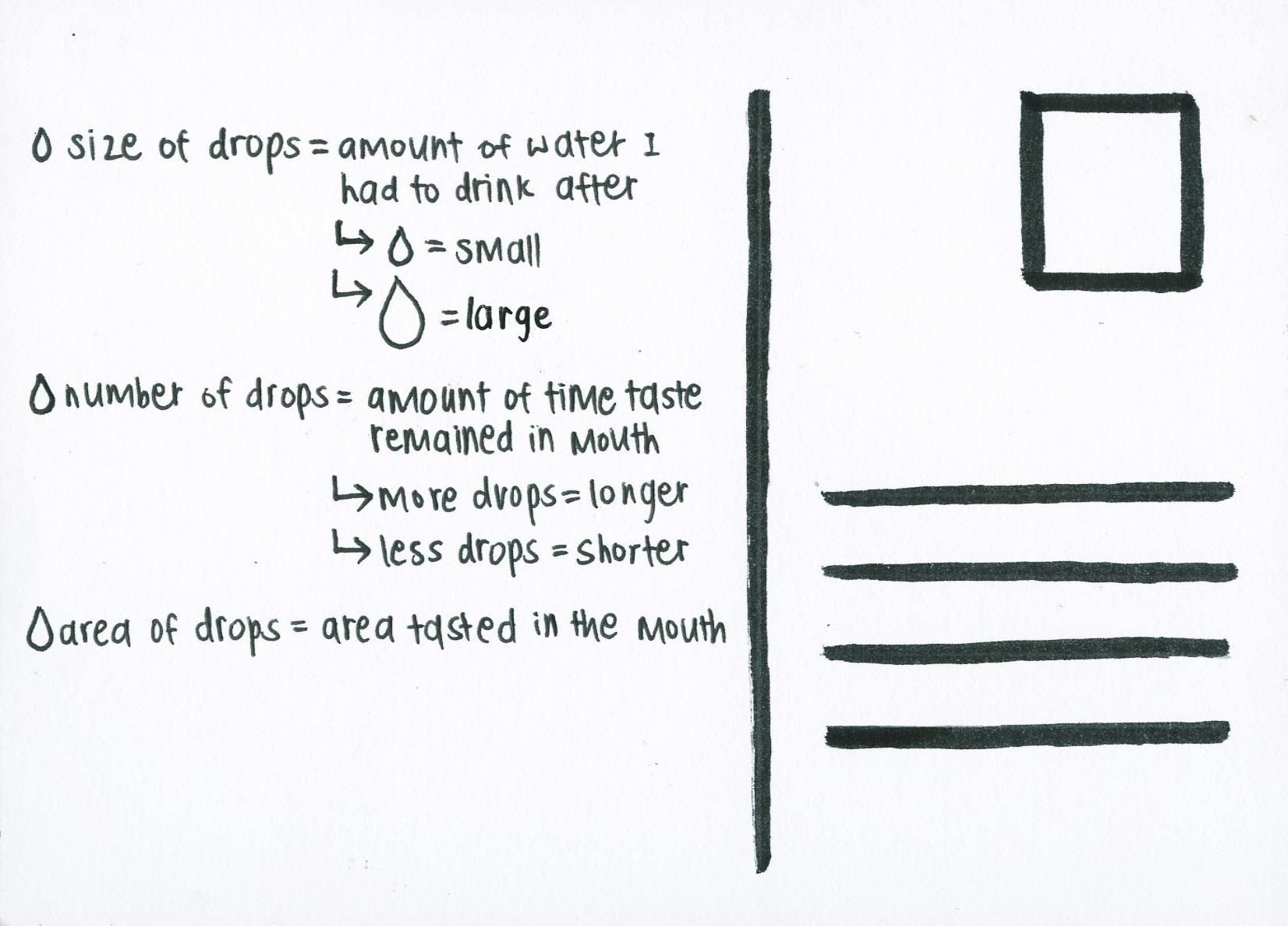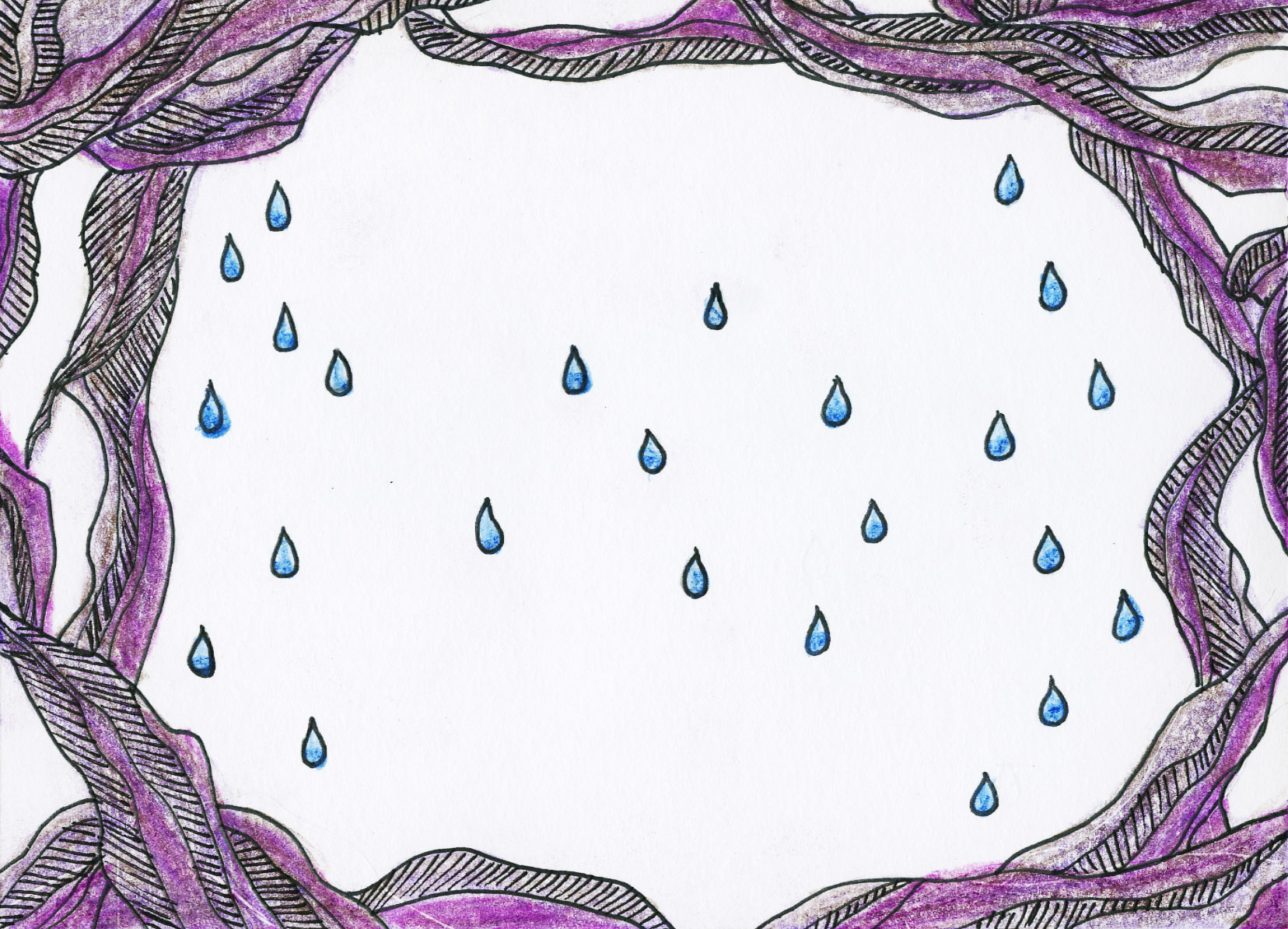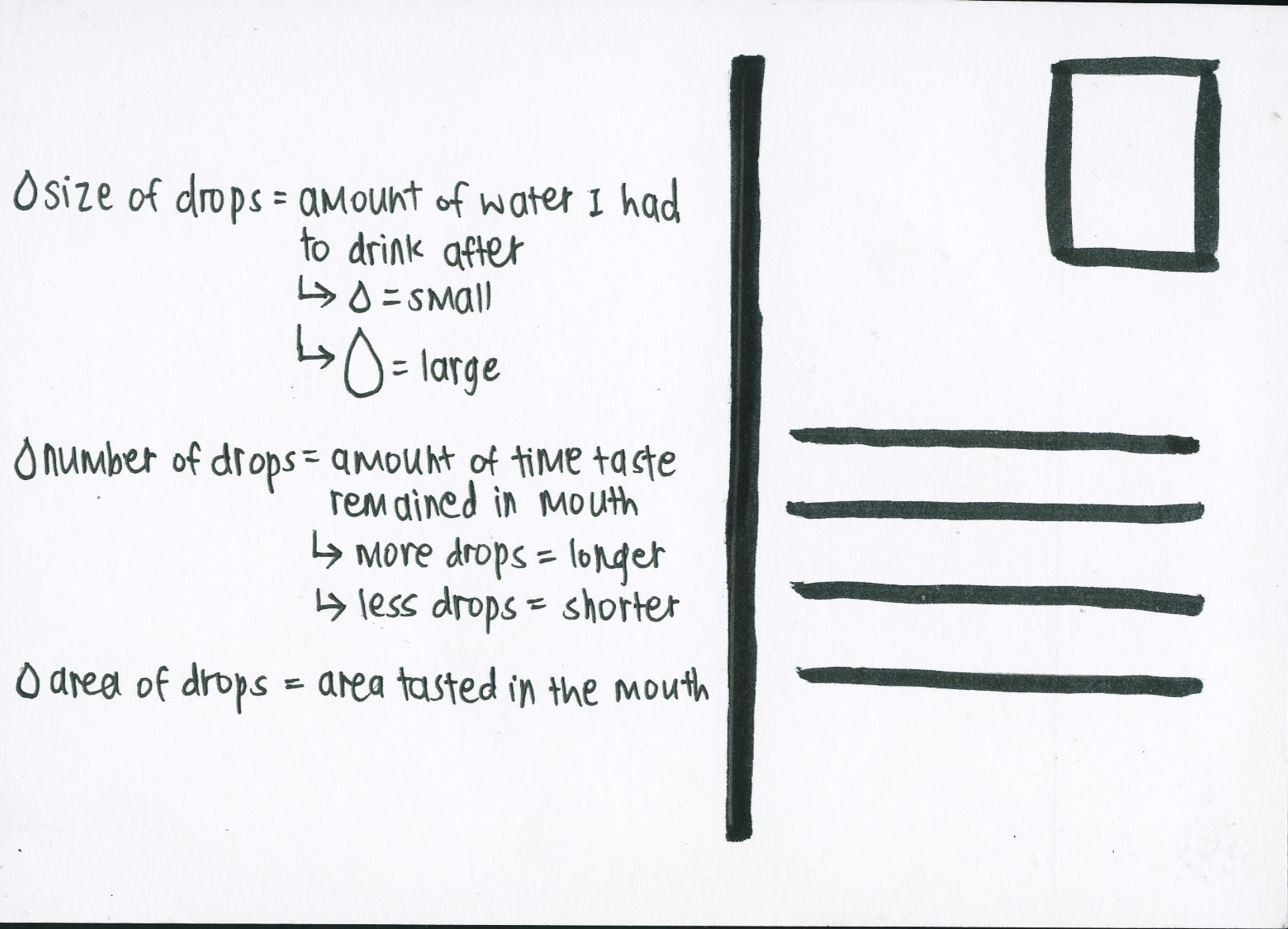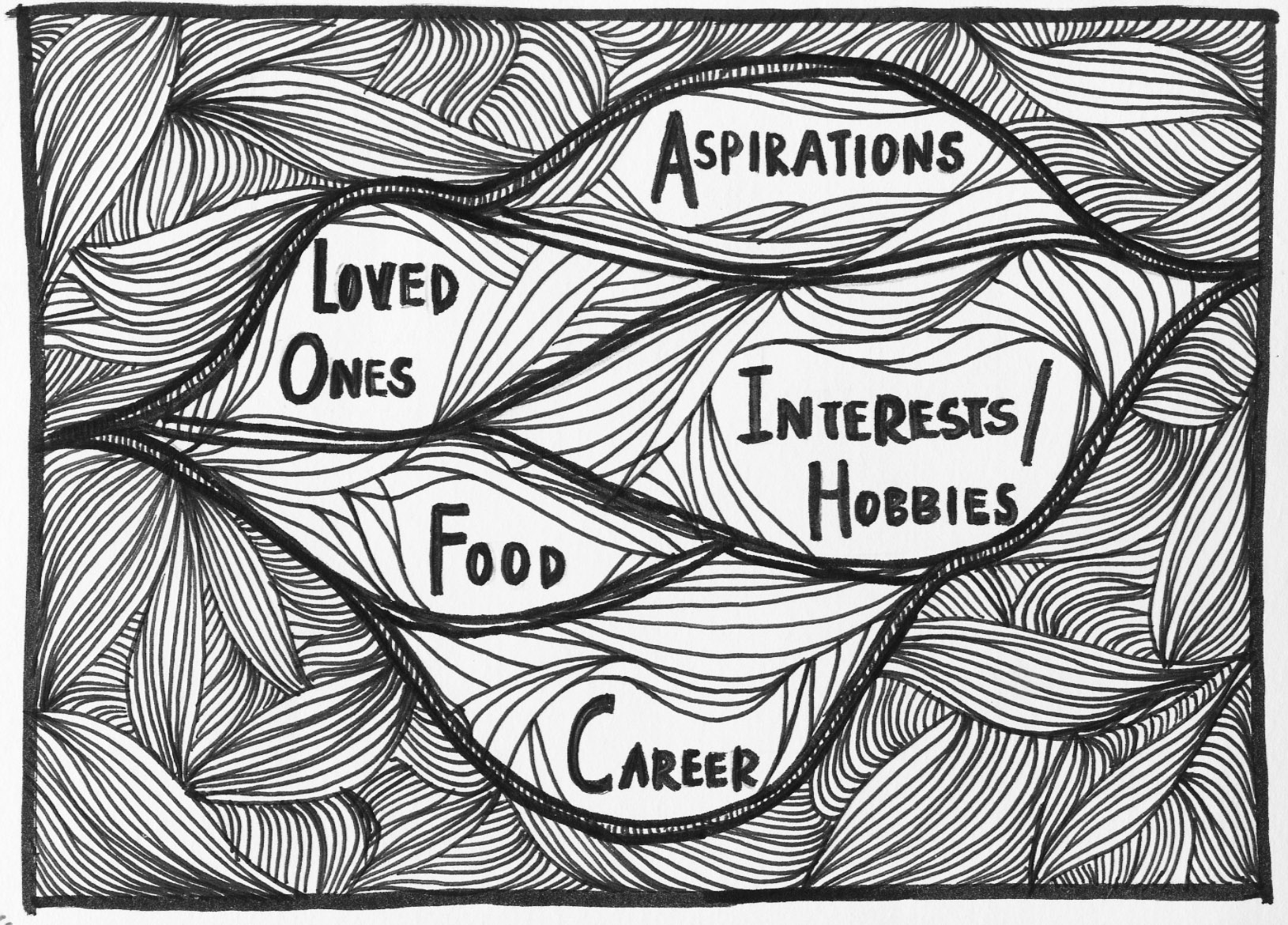For this project, I chose to focus on the topic of child trafficking in Southeast Asia. Child trafficking is a serious and poignant subject to delve into, and it was not very pleasant digging through sources and sources for information because there were many things that were quite terrible stories and facts that I came across, but when choosing the topic for our final, I knew instantly that I wanted to do this because I felt it was something that was sort of taboo to talk about in society and that made it something that wasn’t usually broached. Also, I felt that just because it was not as common in Singapore as it is overseas, it was still something that needed more coverage.
I began by asking around my peers, to try to see what information they knew about child trafficking. However, time after time, the answer would be the same – vague. I also asked what would really leave an impact on them if they were to be told about the subject, and they mostly said if it were people they know that it happened to, or people they knew who told them about it, and one common answer was the survival stories of victims.
Therefore, I came up with the idea of a way to mail out postcards to people we know, as a method of spreading information and awareness. Each postcard would be unique, with a bit of information that I thought was not nearly known as well, and was shocking. I also found organisations online that helped prevent child trafficking and assisted children who were saved, and thought that it would be good to incorporate ways and a platform the postcard receiver could get in touch with and help. So each postcard also has a link to a different organisation. The postcard could be torn off a booklet that can be kept for yourself, so the person reading it would always have access to information and a list of organisations as well.
Here are some pages of the softcopies:
After that, to tie the whole project together, I created a monthly newsletter that would be mailed either physically or online to people who have helped in any way, whether they volunteered or donated, etc. This would allow them to see how their efforts have contributed to the organisation working against child trafficking, so it would provide some encouragement to show that their efforts were not in vain.
I chose to ‘partner’ Urban Light, an organisation working in Thailand, and came up with newsletters for the months of January and February 2017 as examples. Some of the information I found on the Urban Light website, some I adapted, and others are based on information from other sites.
Here are some photos from the exhibition! These show the final outcome of this project after printing.
